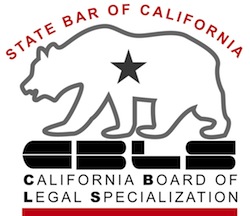Found a mistake in your credit report after bankruptcy?
Happens all too frequently.
But a major credit reporting agency is flat wrong on its advice on how to debts discharged in bankruptcy reported properly.
The cynical side of me is not surprised.
They get so little else right, why do I expect them to write truthfully about bankruptcy and credit reporting?
Credit report after bankruptcy
The “Experian Team” answered a question from a reader asking how to get a bankruptcy discharge shown in a credit report.
The “team” correctly said that a credit report should show that a debt was discharged in bankruptcy. They were correct to say the consumer needed to challenge the incomplete information and provide the correct information.
But, their solution to a credit reporting problem was laughably off base.
Here’s what they said about getting a credit report to show that debts are discharged:
Your bankruptcy records should include a schedule “A” that lists all of the debts included in the bankruptcy filing. Simply send to the address on your report a copy of the schedule “A” and a copy of documentation that the bankruptcy has been discharged, along with a statement explaining that the bankruptcy information should be updated. If necessary, the court also will be contacted and asked to verify the information in your dispute.
Two things are glaringly wrong with this advice.
One, Schedule A is not a list of all the debts included in the bankruptcy. It’s a schedule of real property assets, not liabilities.
Second, not every debt listed in the bankruptcy case is discharged.
We can pretend that Experian is really going to attempt to verify the challenged information. (Studies say they don’t).
But a bankruptcy court is highly unlikely to verify the disputed information. The bankruptcy documents are found online on PACER. No court clerk is going to tell a CRA what debts were discharged.
So, let’s hope the Experian Team gets some higher round draft picks next time around. These team members are woefully inadequate.
Where to find discharge information
The answer about debts “included in bankruptcy” is found in two places in the bankruptcy schedules. One place is schedules D, E, and F , which list secured debts, priority debts, and general unsecured debts like credit cards.
The second source of creditors affected by the bankruptcy is the mailing matrix or master address list. It’s online on the court’s electronic docket as well.
The tricky thing about all of this is that not all debts listed in the bankruptcy case are necessarily discharged.
Some debts, like child support, recent taxes, and student loans, simply aren’t dischargeable.
But for most folks, trying to get their credit report to be accurate, it’s the general unsecured debts that are reported by the CRA, and often reported incorrectly.
So, don’t send schedule A with your credit report dispute. Send schedules D, E, and F along with a copy of your discharge.
Stay on top of it until the credit report is right.
More about credit reports
What was discharged in my case
Does bankruptcy fatally damage my credit?






